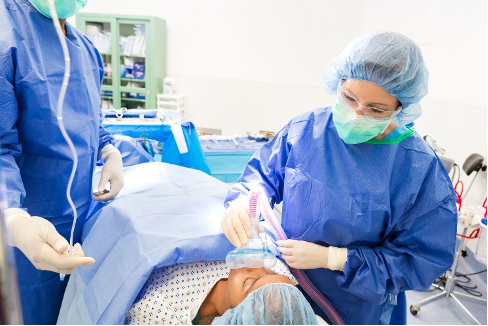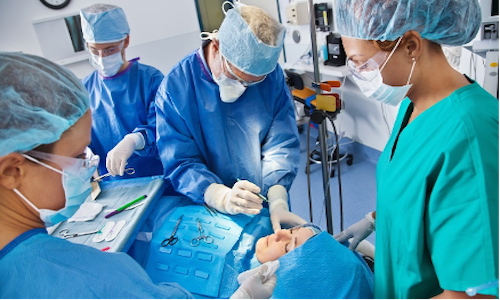The Eyes are the Window to Your Soul
We all know this quote, but its origin is a little unclear. It has been attributed to William Shakespeare, Leonardo Da Vinci, the philosopher Cicero and even the bible.
Whatever the origins of this well-known quote, throughout history we have been aware that our eyes are incredibly precious organs. Not only do they allow us to see the world around us but through them we can tell what a person feels and thinks.
However, despite being aware that somehow our eyes are special, we have been a bit blasé about protecting them. Eye protection has evolved over time(1) via several different routes including:
Combat - To lose an eye in battle and wear an eye patch was once considered an honour. The use of helmets did offer some protection. The use of gas during World War 1 resulted in gas masks with glass windows to protect the eyes from the deadly gas. More recently the rise of IEDs resulted in the percentage of combat causalities hospitalised due to ocular trauma increasing from 2% in 1914 to 13% in the 1990s Desert Storm conflict. In modern armies today eye protection is mandatory.
Sports and Recreation - Jousting required the riders to wear helmets with visors, but eye injuries were common. King Henry II, the French-born King of England, suffered an eye injury during a jousting tournament in 1559. The king had not fastened his visor upon returning to the arena and a splinter from his opponent’s lance entered his right orbit. Complications resulted in the death of ‘the young lion’ from his eye injury. His death significantly changed the respective roles of France and England and the course of Western civilisation and history. Recently, ice hockey, Baseball and Basketball were the first sports to embrace eye protection followed by Squash, Cricket Hockey and Lacrosse.
Occupational Eye Injuries - The rise of industry in the late 19th century resulted in a huge increase in mining and metalwork. This led to a surge in corneal abrasions in miners, heat cataracts in foundry workers and arc eye in welders. Gradually, visors and goggles. . Gradually, improved understanding of the impact resistance of materials and the nature of hazards brought about improvements in visors and goggles in the workplace
Thankfully, mainly due to the rise of Health and Safety, eye protection is now mandatory in many workplaces. There is good reason why this is necessary. Thousands of workers suffer painful eye injuries each year around the world. Many are minor but around 10-20% result in partial or full blindness. Equally, we only have two eyes and whilst some parts of the eye can be transplanted, a complete eyeball transplant is not yet possible. So, we need to do everything we can to protect our eyes as much as we can.
The most common types of injuries are:
Invasion of foreign bodies - The eye/s may sometimes be invaded by small foreign particles (e.g. dust from manufacturing activities) which can cause irritation and inflammation.
Chemical Eye Burns - Both highly acidic (pH <4) and highly alkaline (pH >10) substances are toxic to the eye and cause chemical eye burns if they come into contact with the surface of the eye. Such substances are commonly found in the workplace, for example in laboratory chemicals or industrial cleaning products.
Penetrating Injuries - When an object pierces the eye, penetration occurs, and this can lead to loss of vision or blindness. Staples, nails and flying debris commonly cause this type of injury.
Blunt trauma injuries - These are injuries which do not penetrate the skin and do not result in external bleeding. The eye is struck by a heavy object and this can cause the eye to bleed internally.
Allergic conjunctivitis - Is common amongst workers in the food handling and agricultural sectors who are regularly exposed to spices, fruits, and vegetables.
Eye diseases associated with ultraviolet radiation exposure - Outdoor workers are often exposed to ultraviolet radiation (in the form of sunlight) in excessive quantities. Artificial sources of ultraviolet radiation are also found in a range of workplaces and can damage the eyes. These include welding arcs, germicidal lamps, and lasers.
Computer use disorders - Using a computer for extended periods of time is associated with a range of temporary eye disorders including pain and altered vision.
Of course, when we go about our daily lives, we meet all sorts of people wearing eye protection. These can be construction site workers, the mechanic fixing your car, the gardener mowing your lawn, the person mending your shoes. Many jobs now take eye protection seriously.
Eye protection is also taken seriously even if you are unfortunate to be here -
However, can you guess by looking at these photographs what the problem is?
Where is the eye protection for the patient? Everyone else in theatre has eye protection so why not the patient? A nurse will take a roll of non-sterile tape that has been lying in theatre and tape your eyes. A piece of equipment could hit you in the eye or even someone’s elbow. You are the most vulnerable person in the room and yet nothing is done to protect your eyes from an infection, a corneal abrasion or even a trauma blow. Surely, if a gardener or a cobbler has eye protection then patients undergoing surgery should equally have their eyes protected.
References:
Hoskin A.K, Mackey D.A, Agrawal R, Watson S. (2019). Eye Injuries across history and the evolution of eye protection. Acta Ophthalmologica, 97: 637–643.
Author: Niall Shannon, European Business Manager, Innovgas
This article is based on research and opinion available in the public domain.




